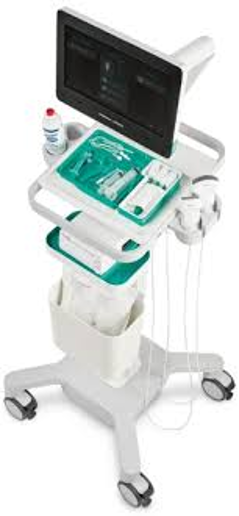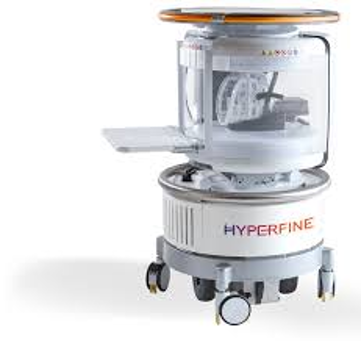De-centralized healthcare is coming …… fast!!!
I find it interesting how rapidly things can change, may it be an entire industry, the landscape of a city or the inevitable graying of a head of hair, being surprised when these events occur even while thinking your eyes never drifted away. The most dramatic of these shifts can be triggered by externalities that also just seem to “appear”, with the COVID-19 pandemic being a recent example that causes significant hardship for the world while at the same time becoming a rapid accelerator of trends that had previously been introduced but not yet widely adopted.
As we began 2020 approximately one year ago, several structural changes were already rippling through the world’s economies, politics and cultures with e-commerce, social media, and entertainment streaming all taking a larger share of our daily attention. Moreover, these same trends with COVID-19 becoming a formidable driver only accelerated as the virus caused significant adjustments in how we live, work, socialize, and even get physical exercise. Until a vaccine is readily available to the public during 2021 most of us who have a choice will continue to work from home, our children will receive primary and secondary learning (at least part-time) over the internet and we’ll be limited to smaller gatherings in order to reduce risk of spreading infection.
In this challenging environment major shifts have now impacted most if not all industries and none as critical or as relevant as in the healthcare sector. Perhaps this is unsurprising since COVID-19 is first and foremost a health crisis that imposes by its highly infectious and deadly nature a re-imagining of the way healthcare will be delivered to the general public. Ironically this crisis also creates an opportunity to revamp the traditionally expensive and underperforming healthcare system in the US by moving from “words to actions” as a decade’s worth of progress in some areas has been achieved during the past months with continuing momentum heading into the new year.
But let’s not overlook the COVID – 19 pandemic is truly a terrible situation for the world that has only reinforced dramatic weaknesses in national preparedness for such an emergency due to limited equipment, resources and hospital capacity as well as inequalities shown by large segments of people without access to even basic healthcare systems. This requires our political leaders, scientists, regulators, hospital practitioners as well as the entire medical equipment supply chain to consider more innovative approaches to compensate due to the severe constraints COVID-19 presents.
Hence in the case of the healthcare industry, there’s now greater focus than ever on leveraging creativity and resourcefulness to see us through these challenging times while concurrently developing improvements that in the future will grant safe and secure access to health facilities for those patients severely hampered by COVID-19 (and future pandemics) while still effectively managing treatment of patients with more routine conditions. In order to achieve this dual mandate, we’re now seeing the beginning of an evolution toward the “de-centralized” model of healthcare delivery, a trend that was slowly gaining attention but not tangible adoption pre-2020.
What’s the de-centralized health model being described? One example which many of us are now quite familiar with during the past year is use of telemedicine services. These online digital communication platforms facilitate patient access for interactions with their healthcare providers for consult, examinations as well as for some treatments without having to travel to an office where there’s risk of virus exposure. Although this technology has been readily available for many years, this is really the first instance telemedicine services are being used by the public in such an extensive way and is gaining wider acceptance:
Fact: During the COVID-19 pandemic, consumer adoption of telehealth has skyrocketed, from 11% of U.S. consumers using telehealth in 2019 to 46% of consumers now using telehealth to replace canceled healthcare visits, according to consulting firm McKinsey & Company’s COVID-19 consumer survey conducted in April 2020.
McKinsey’s survey also found that about 76% of consumers say they are highly or moderately likely to use telehealth in the future. Seventy-four percent of people who had used telehealth reported high satisfaction.
There are several experts like McKinsey who believe telemedicine only encompasses a small step toward a “virtual” delivery model using digital health tools for patient diagnosis, monitoring and treatment with a more extreme transition away from hospitals and stand-alone facilities for routine care soon to come. Over the past year it’s been shown several treatments including for respiratory conditions and musculoskeletal pain can be adequately self-managed by patients and doesn’t necessarily require a visit to a primary care facility. This then frees capacity (both human and beds) for those more serious medical cases or even when a medical emergency like COVID-19 strikes.
Moreover, a beneficial second order effect of a sped-up evolution toward digital health brings us closer to the vision of offering a larger proportion of the global population access to quality healthcare which is significantly lacking in the developing world today (eg. only 20% of these populations even have access to X-ray imaging!) and doing so at a cost point that democratizes health delivery even in the poorest countries.
Prior to COVID-19 four megatrends were already set in motion that exemplify this paradigm shift in healthcare and now hasten changes moving us ever closer to the de-centralized digital model:
- Global Resource Constraints limiting capital, qualified people and equipment in which to invest such as in new healthcare facilities while also having an appropriate supply of medical professionals to deliver required services. This is no longer a “future” problem even in wealthier western societies and causes a re-thinking of how to manage these constraints when there is higher demand for care in both larger and older populations…Speaking of….
- Older Populations/Demographics & rise of chronic illness places the current system of reliance on overwhelmed in-hospital care less realistic as populations get older and a higher volume of treatments become necessary which should enable an increased use of network/telehealth and home-based treatment. Furthermore, this will create job opportunities for those on the new front lines with delivery of point-of -care treatment outside the hospital (eg nurse practitioner) either in the home or at other patient “touchpoints” such as pharmacies that expand today’s in-store health services.
- Increasing consumer engagement with personal health, wellness and health trackers such as Apple Watch, Fitbit, Whoop….etc. These devices provide accurate and granular understanding of human health and body offering diagnostic insights for both self-evaluation as well as to share remotely with external medical providers. Based on wider adoption of these devices going forward as well as improved performance (eg. alerting you to a significant cardiac event that in many cases go undetected will reduce fatalities from heart attacks), the opportunity to pinpoint a specified condition with crucial data will offer doctors even without being at the patient’s side more valuable information to make faster and more accurate diagnosis while also planning follow-up treatment. Should this new workflow and patient interface operate as intended, it will undoubtedly result in less waste and improved medical outcomes for a wider segment of the population due to its clear efficiencies.
- Ultimately Digitalization is the key to the de-centralized model by connecting people, data and software. This will allow truly “virtual” healthcare that’s well supported by AI diagnostics and smarter algorithms that provide the basis for more accurate diagnosis as well as more effective diagnostic and treatment workflows. In 2020 we saw the first AI-based radiology software platform approved in the US for reimbursement and the expectation for wide-scale use of these advanced algorithms has only become more amplified.We also witness the private sector and non-traditional companies like Amazon starting to enter healthcare delivery based on both the significant business opportunities it presents as well as their comfort level and experience using data to disrupt markets and meet unmet customer needs: It’s not hard to imagine a day not far off when Amazon is delivering COVID tests and other basic health services directly to and inside the home.
One segment that has used the COVID-19 crisis as an opportunity to deploy recent innovations is the medical equipment industry which includes X-ray imaging equipment, patient monitoring and lab analysis tools. This industry stands to significantly benefit from current emerging trends as it presents new opportunities in modalities that have recently become stagnant such as CT/MRI and especially within the developed countries of US and Western Europe.
As Medical equipment OEMs start to re-think the traditional equipment “configuration” from hospitals to a wider range of treatment locations including patient homes, more innovative designs and products will be developed to meet the needs of their customer as well as the promise of better patient outcomes while at lower cost.
Fortunately there are several companies already developing novel solutions into this emerging healthcare model and I’ve highlighted below a few that have the industry’s attention:
GE Healthcare and Philips now both offer mobile point- of-care ultrasound machines for diagnostic and therapeutic applications, wherever the patient is located, for instance, at the bedside, in an ambulance, hospital emergency room, or in remote locations such as, villages or distant towns. Ultrasound is a cost-effective and easy to operate diagnostic tool that provides critical imaging data for patient diagnosis in a number of pathology categories

Nanox is a start-up X-ray imaging company that has designed a cutting-edge, downsized imaging scanner that aims to compete against larger and more expensive existing x-ray machines, with the first model called the Nanox.ARC. The technology, size of the system and price point target also means that it can be used for more regular scanning in smaller physical locations

Hyperfine is a start-up MRI company offering a low-cost and high-performance portable MR system called SWOOP which wheels directly to a patient’s bedside, plugs into a standard electrical wall outlet, and is controlled by an Apple iPad® to obtain brain images of patients of all ages, in variety of clinical settings.

Crosscope is a start-up that provides an imaging analysis service leveraging machine learning and cloud-based platform to enhance pathology workflows, accelerate image analysis and support collaboration among healthcare professionals to dramatically increase speed of cancer diagnosis

There are a great many other innovations now coming to market as this article only scratches the surface of the dramatic changes we can now expect to see in the healthcare sector as we move through the 21st century; of course these products have major hurdles to overcome for adoption (think about the overhang of how insurance works or more appropriately fails to be efficient in the case of the US) as well as greater risks of a less-controlled environment in which healthcare is delivered that will require reaching a certain acceptance level by both doctor and patient alike.
Nonetheless, changes strongly accelerated by the COVID-19 virus and the likely promise of future pandemics in the years ahead have only brought digital health and de-centralized models to the forefront with significant effects widely expected by 2025, at least in more developed countries. Using digital technology as the foundation, the hope is we will use the learnings of a difficult past year to properly prepare ourselves in dealing with the next health emergency while “doubling down” on those innovations and new approaches that will improve general healthcare delivery for all.
